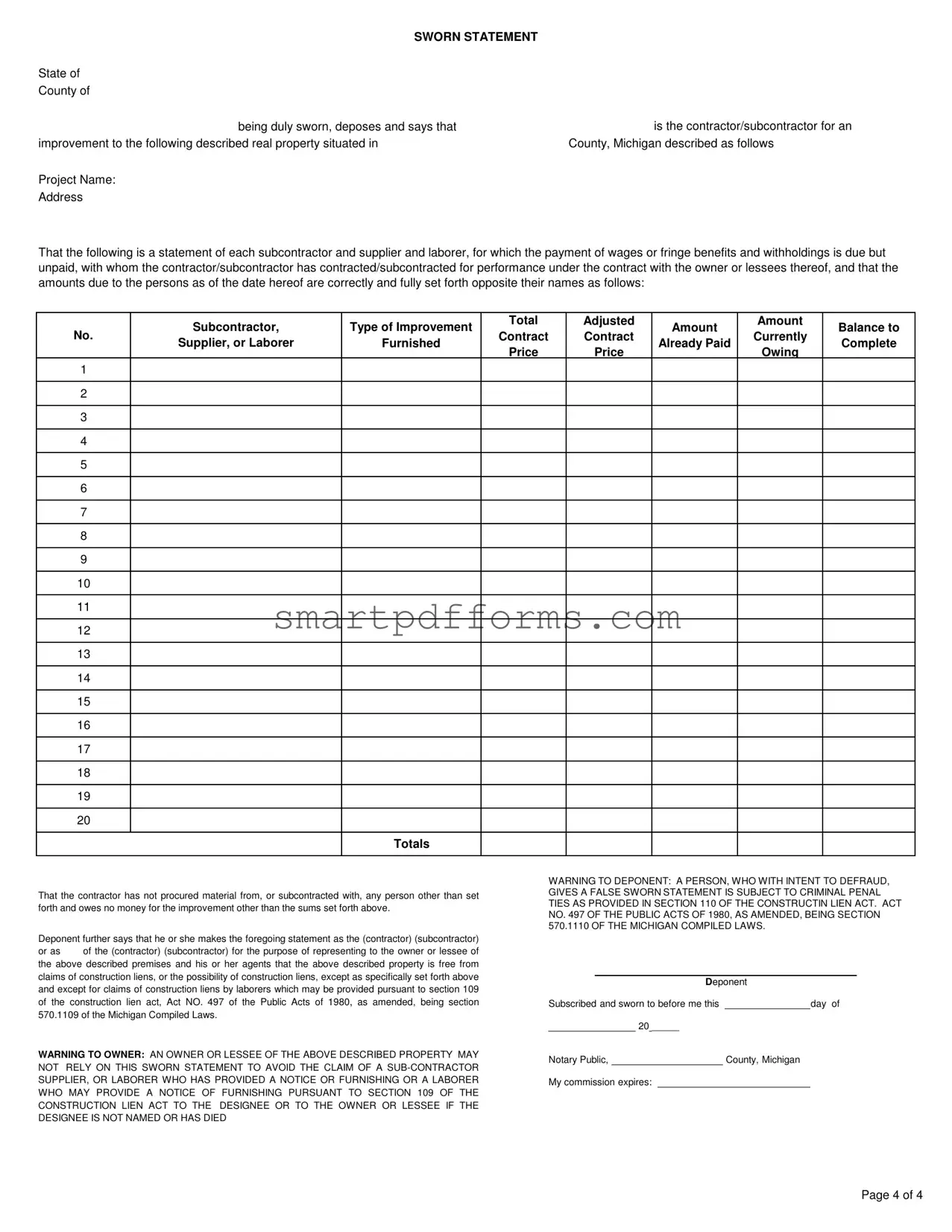In the realm of construction and property improvement in Michigan, the Michigan Sworn Statement form plays a crucial role, safeguarding the interests of property owners, contractors, subcontractors, and their respective laborers and suppliers. This legally binding document ensures transparency and accountability in financial dealings related to property improvements by meticulously outlining every party involved in the project along with their financial status in terms of payment due or received. Precisely, it records the names of subcontractors, suppliers, and laborers who have been engaged for a particular project, detailing the type of improvement, the total adjusted contract amounts, and the balance due. Essentially, it serves not just as a financial ledger but as a declaration by the contractor or subcontractor that all listed payments are accurate to date, and no undisclosed financial liabilities exist which could lead to future claims of construction liens against the property. Specifically, it assures property owners and lessees that the property stands clear of such claims, barring those which might arise under specific provisions of the Michigan Construction Lien Act. Additionally, it carries a stern warning for both the property owner and the deponent, emphasizing the serious legal consequences of relying on a false statement or of falsifying the statement itself, underlining the commitment of Michigan law to prevent fraud and ensure fairness in construction-related endeavors.

